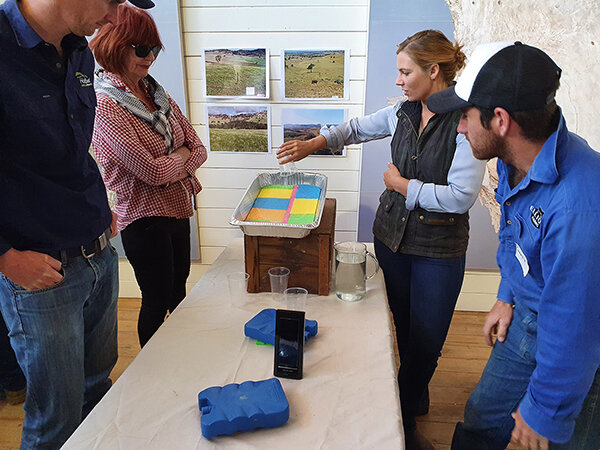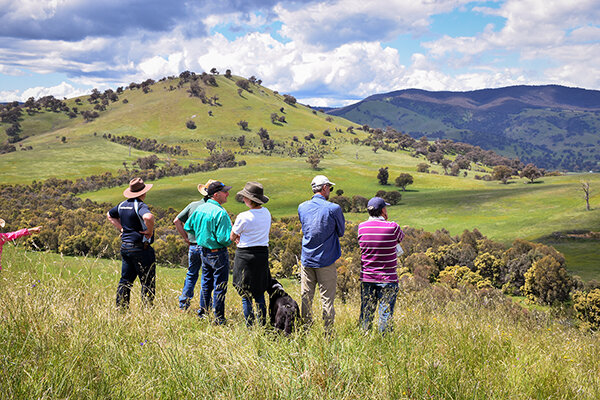Peter Hazel makes a point
Late in October, representatives from the Mulloon Institute headed south to Gill Sanbrook’s regenerative grazing property ‘Bibbaringa’ near Bowna, NSW. In collaboration with David Hardwick from Soil Land Food, the team conducted a ‘Regenerating Rural Landscapes’ two-day bootcamp.
The course was blessed with a diverse group of participants ranging from Riverina graziers and croppers to local farmers to Southern Highland hobby farmers. Some managers were well versed in regenerative practices while others were totally new to the idea. The confluence of these varied skill sets, backgrounds and regions meant that knowledge shared between participants was just as valuable as knowledge shared by the presenters.
David Hardwick explains the benefits of soil conservation
Over the two days, presentations from Gill, David and Peter challenged the perspective that managers approached their landscape decisions from and developed key tools needed in identifying landscape features and functions. David employed a unique set of activities to demonstrate paradigms in landscape thinking of which his courses are famous for. Presentation topics included building a farm vision, soil conservation and management, working within the limits of a property’s geography and landscape rehydration.
Demonstrating how water flows through a functioning landscape
A highlight of the course was being taken up the back of Gill’s property and looking down on the entire farming system. Here the group used their new skills to identify where Gill had engineered her landscape to provide the productive and environmental outcome mix that worked for her enterprise.
Viewing Gill’s entire farming system.
Gill Sandbrook
This was a great introductory course that provides people with a grounding in holistic management, regenerative farming and landscape rehydration. Feedback from the 30 participants was overwhelmingly positive. Managers in the group were eager to go home and apply the skills they learnt to their own farming systems. It was encouraging that people left the course with more questions that they came with. This signals demand for further specialised and in-depth courses as the regenerative agriculture movement grows. Possibilities of future collaboration between the Mulloon Institute and Soil Land Food are being explored as this exciting new partnership moves forward.
A special thanks to Gill for her generosity in hosting the course and sharing her journey through regenerative agriculture.
Thanks to Penny Cooper for letting us use her photos in this story.




